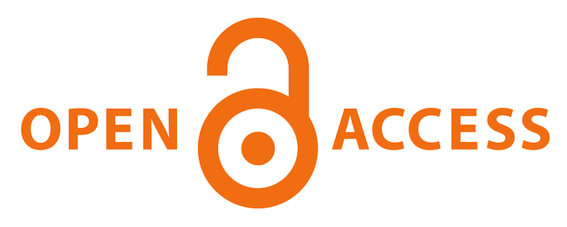Outline of Open Access
Open Access provides free and online access to scientific and scholarship publications. Generally free of most usage restrictions, it also allows researchers to re-use a paper to speed up the process of research. Two different models occur in the Open Access movement. Either a publication is self-archived by a researcher in open archives, either it is published in Open Access journals.
Since the first academic journals apparition in the 1660s, researchers use scientific publications to communicate on their research works. Well established in the research process, a good scientific publication is synonymous of recognition for its authors. Thus, scientific publication market increasingly developed with price rising and use restrictions as consequences. With the web development, a new publishing model began to appear with the idea of openness: the Open Access.
The first objective of Open Access is to provide free and online access to scientific and scholarship publications for everybody in the world. The second one is to allow the re-use of a paper without legal restrictions. The first step was the creation in 1991 of arXiv, an online archive for preprint publications originally dedicated to physicists. Since then, the openness ideal for scientific publications continuously developed especially with the proposition of many international declarations. An important one is the Budapest Open Access Initiative in 2002 which describes the Open Access movement.
Two models are available in the Open Access movement. One is the use of online archives where researchers can themselves deposit their papers. It corresponds to the “green way” of Open Access. The other one is for researchers to publish their papers in online Open Access Journals. It corresponds to the “golden way” of Open Access.

Steacie Science and Engineering Library at York University.
Source: http://commons.wikimedia.org/wiki,
File: SteacieLibrary.jpg
The green way
Self-archiving a paper in online open archives corresponds to the green way of Open Access. Researchers can deposit without charge their non peer-reviewed papers (preprints), peer-reviewed papers (postprints), thesis, conference papers, etc. in any digital repositories. Before self-archiving, researchers have to ask permissions from the possible co-authors of their papers. Moreover, researchers can deposit a peer-reviewed paper in an open archive only with permission from the publishers. To help researchers to know the publishers’ policies concerning self-archiving, web platforms like SHERPA/ROMEO provide some information. To allow any people to re-use their papers without legal restrictions while still keeping credit for their works, it is also recommended for researchers to assign copyright-licenses to their works such as Creative Commons licenses.
An open Archive can take different forms. The more commons are those of an institutional repository and a disciplinary repository. An institutional repository is an archive that contain all kind of publications of an institution such as a university or a research institute. The GSE Open Archive of the Stanford University and the DSpace@MIT of the Massachusetts Institute of Technology (MIT) are good examples of institutional repositories. A disciplinary repository contains publications from a certain field of research. For example, PubMed Central is a repository dedicated to life science.
Numerous repositories exist nowadays and new ones still appear. It’s the case of Zenodo, an universal repository launched in early may. This repository is also dedicated to Open Data. To help researchers to find one specific repository, web services appeared. ROAR, ROARMAP or OpenDOAR are key actors is this area. Moreover, thanks to the Open Archives Initiative Protocol for Metadata Harvesting (OAI-PMH), several repositories can be searched at the same time to find one paper. Driver and OpenAIRE, two European repository networks, are good examples of web services which can search into repositories.

Source: http://commons.wikimedia.org/wiki,
File: Open_Access_PLoS.svg
The golden way
Publishing a paper in an online Open Access journal corresponds to the golden way of the Open Access. Compared to the green way, publishers put the papers directly online by applying processing charge for the authors’ paper or their institution. With Open Access journals, the peer-reviewing process is maintained to ensure the quality of a paper.
Many Open Access journals are available. The Public Library of Science (PLoS), BioMed Central, eLife, PeerJ, and F1000Research are good examples of Open Access journals. Even well-known publishing companies provide open access options such as Springer, Elsevier and the Nature Publishing Group. In this case, as not every publications are Open Access, they are showed as hybrid open access journals. Moreover, the golden way of Open Access continuously evolves. One of the last events was the launch in mid-May of PLOS Currents: Outbreaks that provides a rapid access to research papers in the field of disease outbreaks. The particularity of this Open Access publication channel of PLoS is to not apply publication fee.
To help researchers to directly search a paper in Open access journals, some web services appeared. For example, the Directory of Open Access Journals (DOAJ), Open J-Gate or the Open Access Journals Search Engine (OAJSE) provide good results. Moreover, many Open Access journals are also indexed in academic databases and search engines such as Google Scholar, Scopus, or CiteSeerX to allow researchers to find an Open Access paper.
To conclude, two ways exist in the Open Access movement. Each one aims to provide free access to a research paper for anybody in the world and to allow the re-use of those papers without the most usage restrictions. The Key differences between the two ways are that the peer-review process is maintained in the golden Open Access ensuring a paper quality. Consequently, golden Open Access applies publication fee while green Open Access doesn’t.


 Share on Facebook
Share on Facebook Share on Twitter
Share on Twitter